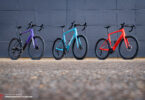In a time of increasingly cryptic model designations, “Argonaut Road Bike” is a refreshingly uncomplicated name. With a mind-boggling price tag of € 13,500 the luxurious, tailor-made, opal-green specimen from Oregon is the most expensive bike in our test. But is it just another over-hyped carbon bubble, or the most desirable dream bike of all time?
This bike is part of a previous group test. Here you’ll find the latest GRAN FONDO race bike group test.
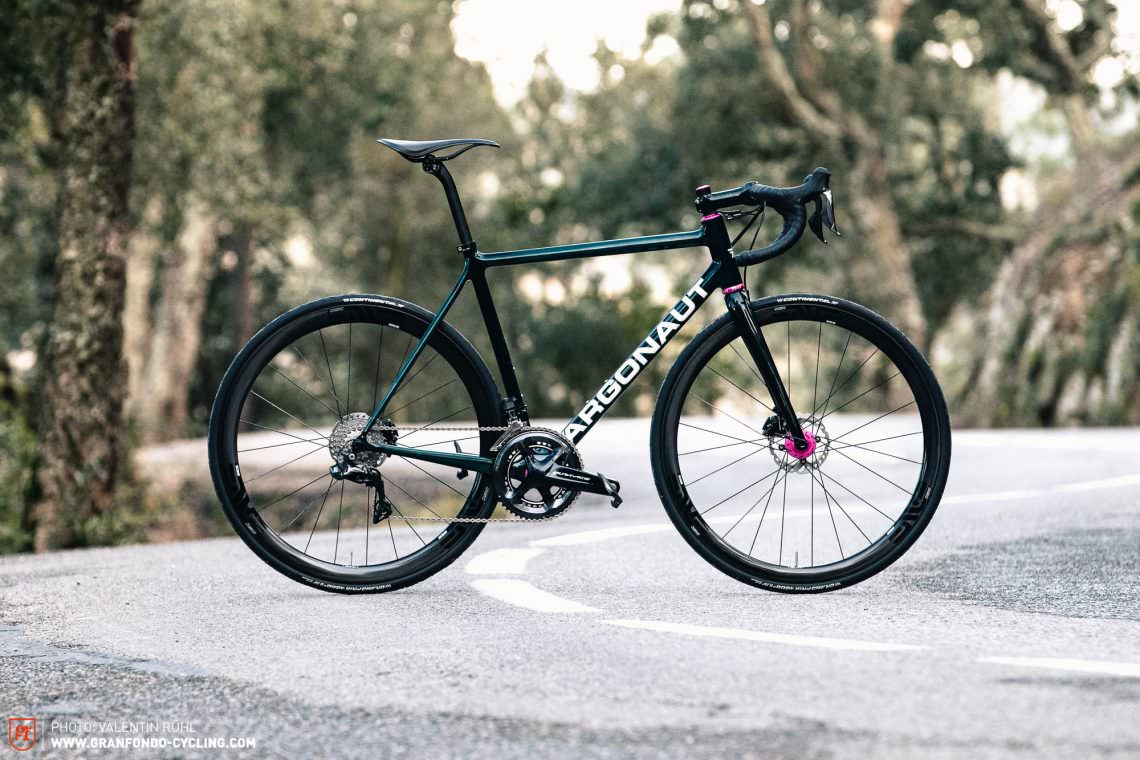
Classic frame shapes, traditional aesthetics and modern high-end components: at first the Argonaut looked like a modern steel classic but when we got closer we realised we were looking at one of the most beautiful carbon bikes we have tested in a long time. The shiny green paint stretches from the handmade frame and fork to the stem and allows a hazy glimpse of the carbon below. Chris King components in juicy pink on the headset, hubs and bottom bracket provide a sharp colour contrast and make for a unique look. The cockpit, seat post and SES 3.4 carbon rims bear the distinctive ENVE logo.
You can put absolutely anyone on this bike. And if they’re not having fun, they better give golfing a go!
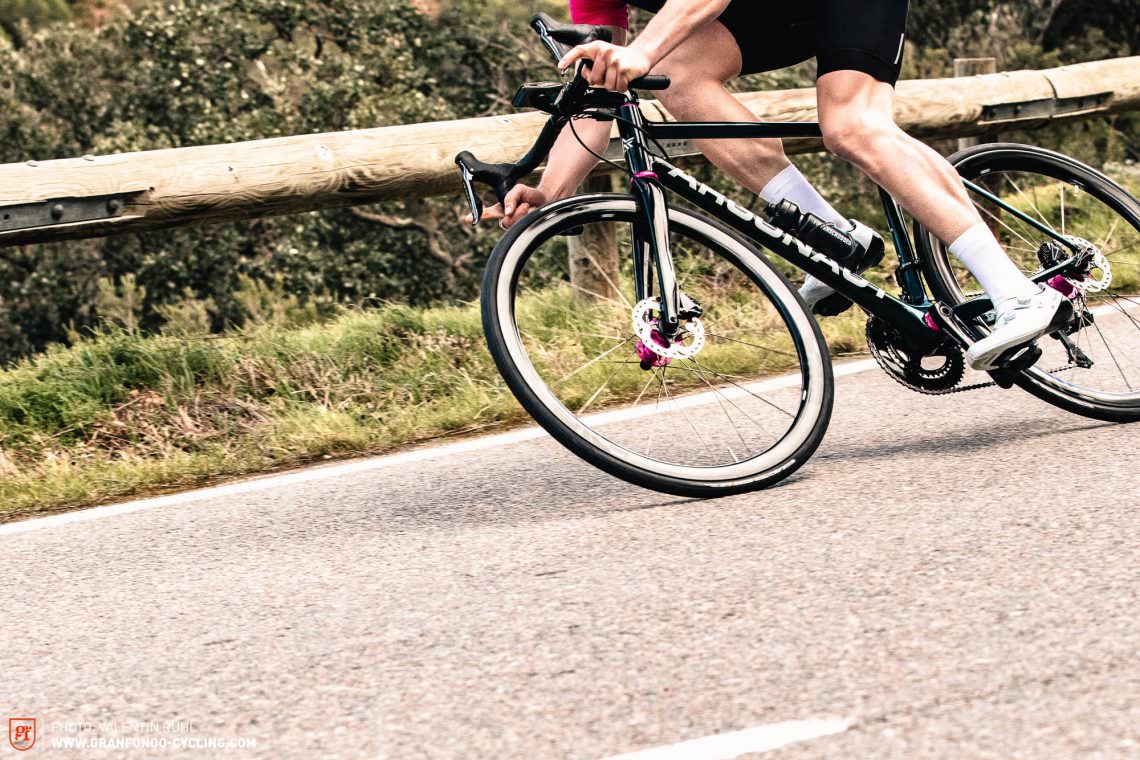
Argonaut rely on a complete Shimano Dura-Ace R9170 Di2 groupset with 140 mm rotors front and rear and round off the package with a set of Continental GP 4000 S II tires. Only the externally mounted Di2 junction box under the stem is an eyesore though thankfully only a small one. In our test-configuration the Argonaut weighs just 6.85 kg in size 56 and sets you back a whopping € 13,500. The spec is not set and can be freely configured. If you’re only interested in the frameset you’ll still have to splash out approx. € 6,350, depending on your current exchange rate.
The Argonaut Road Bike in detail
Drivetrain Shimano Dura-Ace Di2 R9170 2 x 11
Gearing 52/36T und 11–30T
Brakes Shimano Dura-Ace BR-917 140/140 mm
Seatpost ENVE Road Carbon 25 mm Setback
Stem ENVE Road Stem Carbon 110 mm
Handlebar ENVE Road Bar Compact 420 mm
Wheels ENVE SES 3,4 Disc
Tires Continental GP 4000 SII 25C
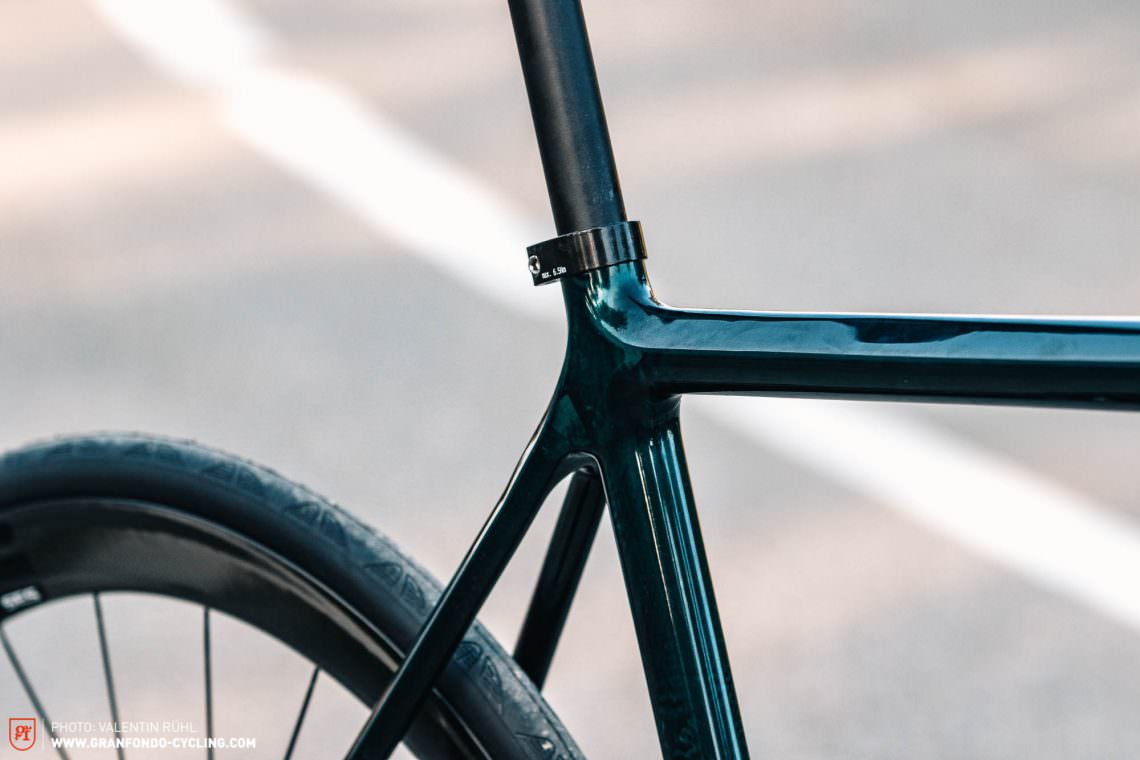
Round is too easy! In order to achieve the desired characteristics, Argonaut engineers had to shape the tubes square.

The seat stays are bolted onto the dropouts with aluminium inserts. This makes the dropouts more durable and gives room for configuration: thru-axle or quick release?
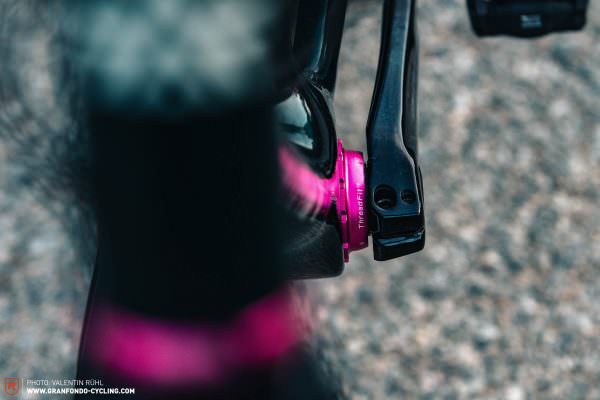
The T47 bottom-bracket standard combines the advantages of Pressfit systems with the perks of BSA bottom brackets.
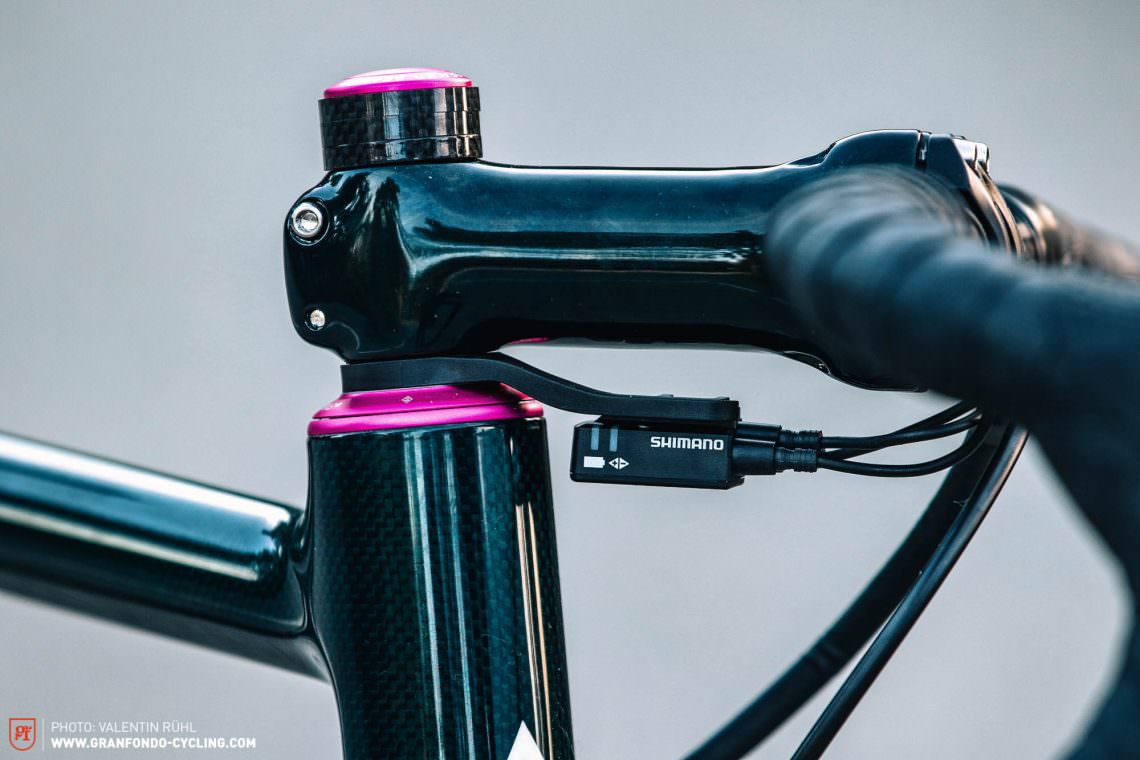
Even though the Di2 junction-box has been neatly installed with spacers, we would prefer to see it integrated into the bar-ends. Unfortunately, this is not an option with current ENVE-bars.
The geometry of the Argonaut Road Bike
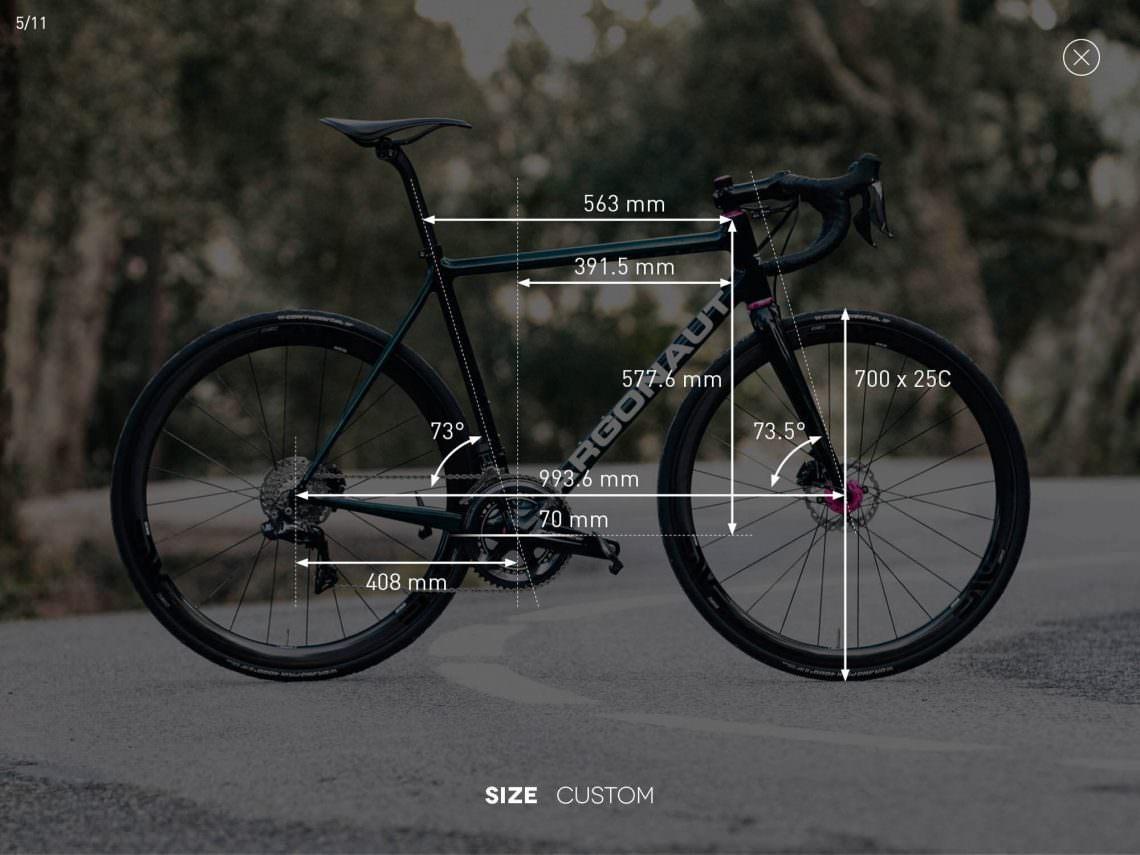
The Argonaut Road Bike in test
The Argonaut accelerates nimbly, though from a standstill it isn’t the quickest or most agile bike we have ever experienced. Instead it surges forward, but does so in a conservative and well-mannered way. Once it reaches cruising speed, the Argonaut is extremely efficient on the flats and benefits from its low weight on climbs. However, the real ‘wow’ factor only kicks in when you hit the first corner – the perfectly balanced handling makes you feel like ‘the king of carving’.


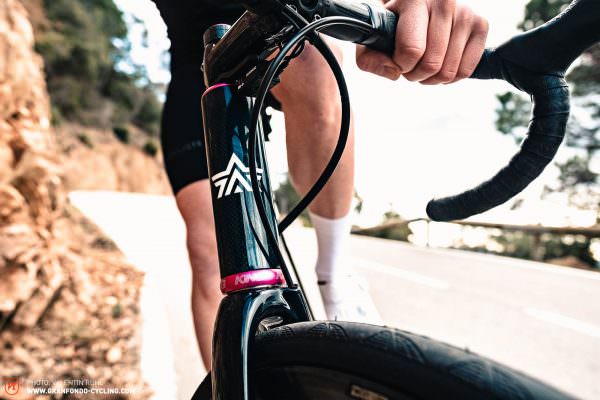
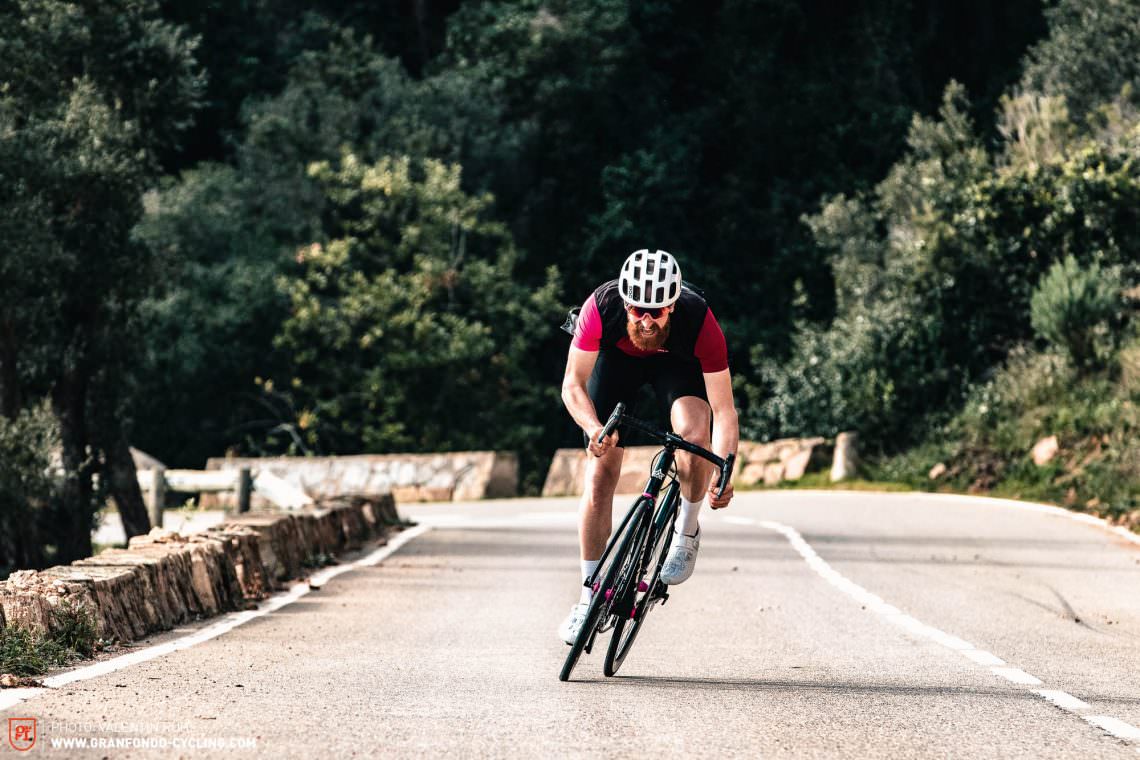
The Argonaut is agile without feeling restless, providing a ride that is direct but never fidgety, smooth but never lethargic. Since it lets you adjust your position whilst cornering easily, the Argonaut inspires huge amounts of confidence – you can playfully throw it around corners while feeling safe riding right up to the limit. Speaking of limits: on long descents and with heavy riders, the small 140 mm front brake rotor tends to overheat sooner. To be on the safe side you should consider swapping it with a bigger 160 mm model.
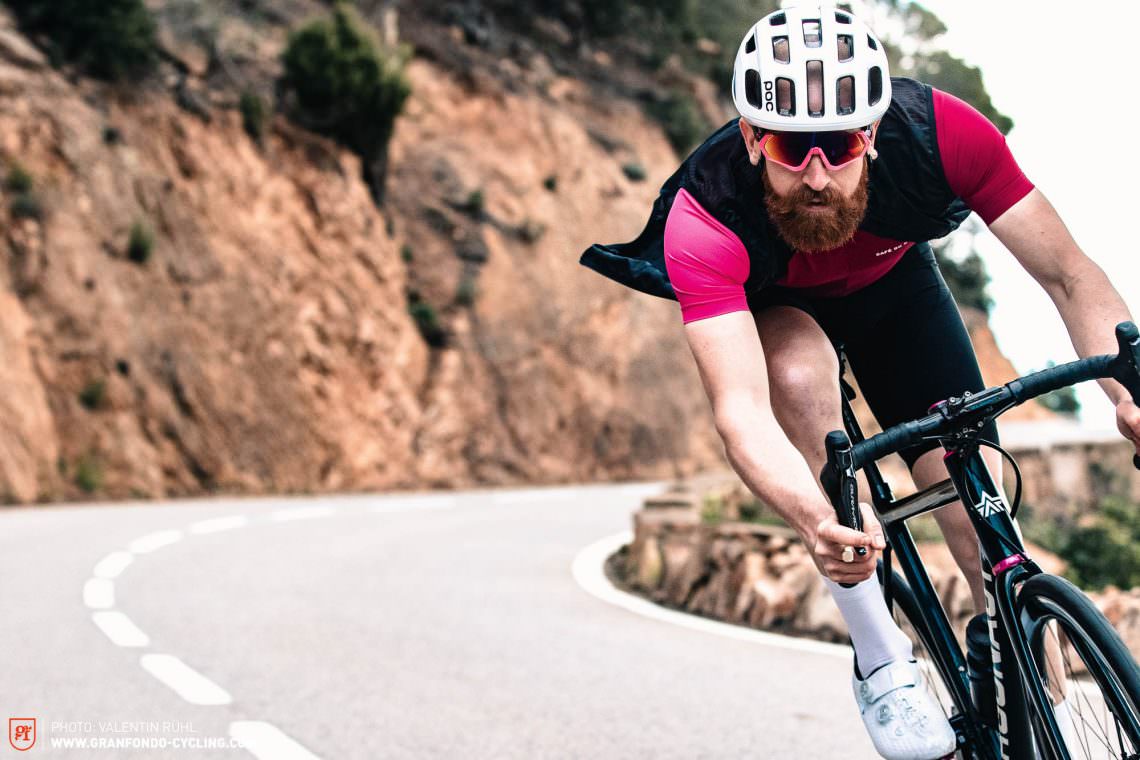
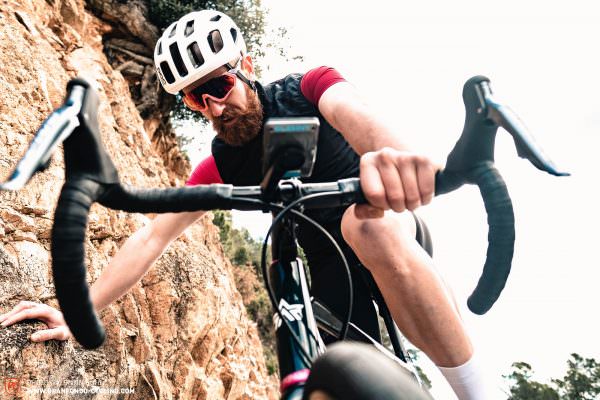

The Argonaut owes its comfort to multiple factors and not only one part. Each component like frame, fork, cockpit, seat post and wheels offers a certain degree of compliance and makes for a more comfortable overall system. The build deals efficiently with vibrations and harder knocks, without ever feeling mushy. This reminds us of the comfort and long-distance suitability of high-quality steel frames.
Conclusion
The Argonaut Road Bike is the ideal carbon-mistress for all steel devotees. The incredibly harmonious and balanced handling make it the perfect choice for beginners, weekend warriors and even pros who are in for some fun in the off-season. It’s a pity that only a few of us can afford the astronomic price tag. Unfortunately, the Argonaut Road Bike is missing just that tiny bit of extra acceleration zest to deserve our coveted “Best in Test” badge.
Tops
- Perfectly balanced handling
- Very confidence-inspiring
- “Sit and forget’” feeling
- Custom-made individualisation creates unlimited possibilities
Flops
- 140 mm front-brake-rotor too small for inexperienced riders
- Shimano Di2-Junction-Box under the stem
For more info: argonautcycles.com
This bike is part of a previous group test. Here you’ll find the latest GRAN FONDO race bike group test.
All bikes in test: Basso Diamante SV 2019 | Bianchi Oltre XR4 Disc | BMC Timemachine Road 01 TWO | Canyon Ultimate CF SLX Disc 9.0 | Cervélo S5 | EXEPT Allroad Classic | FOCUS IZALCO MAX 9.8 | MERIDA REACTO DISC TEAM-E | Specialized S-Works Tarmac Disc SL6 Disc | Trek Madone SLR 9 Disc
This article is from GRAN FONDO issue #011
GRAN FONDO Cycling Magazine is published in a digital app format in both English and German. Download the app for iOS or Android to read all articles on your tablet or smartphone. 100% free!

Did you enjoy this article? If so, we would be stoked if you decide to support us with a monthly contribution. By becoming a supporter of GRAN FONDO, you will help secure a sustainable future for high-quality cycling journalism. Click here to learn more.
Words: Photos: Valentin Rühl









